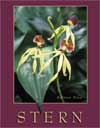1. The exposed seeds of gymnosperms are produced on sporophylls, forming
a strobilus, or cone. The seed (female) cones and smaller pollen (male) cones
are produced on the sporophytes. 2. A female gametophyte develops within a nucellus that is enclosed
in an integument inside an ovule. The integument becomes the seed coat of a
seed after fertilization, and the female gametophyte nurtures the development
of the embryo. 3. Four phyla of living gymnosperms are recognized. Phylum Pinophyta
includes the conifers. Ginkgo is the sole living representative of Phylum
Ginkgophyta. The cycads are in Phylum Cycadophyta. Phylum Gnetophyta includes
the gnetophytes Ephedra, Gnetum, and Welwitschia. 4. Pines are the most numerous conifers. The needlelike leaves are arranged
in clusters of two to five and have modifications adapting them to harsh environments. 5. Resin canals, occurring throughout the plants, secrete resin that
inhibits fungi and certain insect pests. 6. Pine xylem lacks vessel members and fibers and is relatively soft.
The phloem lacks companion cells but has albuminous cells that apparently perform
the same function. Pine roots are always associated with mycorrhizal fungi,
which are essential to normal development of the plants. 7. Two kinds of spores are produced. Microspores are produced in papery
pollen cones that, in turn, develop in clusters toward the tips of lower branches.
The microsporangia develop in pairs toward the base of the pollen cone scales
and give rise to four-celled pollen grains that occur in huge numbers. 8. Megaspores are formed in ovules at the bases of seed cone scales.
The integument of the ovule has a pore called the micropyle. One megaspore develops
into a female gametophyte. The mature female gametophyte contains archegonia. 9. Before the archegonia mature, pollen grains catch in sticky pollination
drops between the cone scales. Each pollen grain produces a pollen tube that
digests its way down to the developing archegonia, and two of the original four
cells in the pollen grain migrate into the tube as it grows. The generative
cell divides and produces a sterile cell and a spermatogenous cell that itself
divides, producing two sperms. 10. After pollination, one sperm unites with the egg, forming a zygote.
The zygote develops into an embryo of a seed that has a membranous wing formed
from a layer of the cone scale. 11. Some conifers produce seeds enclosed in fleshy or berrylike coverings.
Their evolutionary origin is not clear. 12. Ginkgo has small fan-shaped leaves with evenly forking veins.
The life cycle of Ginkgo also is similar to that of cycads. The edible
seeds are enclosed in a fleshy covering that has a rank odor at maturity. 13. Cycads superficially resemble palm trees with unbranched trunks
and crowns of large, pinnately divided leaves. They have strobili and life cycles
similar to those of conifers, but their sperms, unlike those of pines, have
numerous flagella. 14. Gnetophytes all have vessels in their xylem. Half the species are
in the genus Ephedra, whose members have jointed stems and leaves reduced
to scales. Gnetum species have broad leaves and occur in the tropics,
primarily as vines. Welwitschia is confined to southwest African deserts.
Its stem is in the form of a shallow cup with straplike leaves that extend from
the rim; basal meristems on the leaves constantly add to their length. 15. The seeds and inner bark of pines are edible, and a tea has been
made from the leaves. Eastern white pine stems were used as masts for sailing
vessels and for crates, furniture, flooring, paneling, and matchsticks. Western
white pine is the source of most such lumber today. 16. Resin from pines consists of turpentine and rosin. Turpentine is
used as a solvent, and resin is used by musicians and by baseball players. Dammar
from kauri pines is used in colorless varnishes. Amber is fossilized resin.
Resin is also used in floor waxes, printer's ink, paper coatings, perfumes,
and the manufacture of menthol. 17. White spruce is the chief source of newsprint. It was also used
for basketry and canoe lashing by Native Americans, with molasses or honey for
treating scurvy, and in brewing a beer. Spruce resin was used for a type of
chewing gum. The wood is used as soundboards for musical instruments and in
the construction of aircraft. 18. Larch and juniper woods are used for fence posts. Firs are used
in the construction, paper, ornament, and Christmas-tree industries. Douglas
fir is probably the most desired timber tree in the world today. 19. Coastal redwoods are also prized for their wood, which is resistant
to fungi and insects. Bald cypress wood, used in the past for coffins and shingles,
is also resistant to decay. 20. A dye and tannins are obtained from the eastern hemlock. Native
Americans used parts of hemlocks for poultices and for food. 21. Eastern white cedar's wood was used for canoes, and that of the
Atlantic cedar was used for construction of pipes for pipe organs. Yew wood
is used for making bows, and an extract has potential for the treatment of human
ovarian cancer. 22. Podocarps of New Zealand have edible seeds. Incense cedar wood is
used for cedar chests, cigar boxes, pencils, and fence posts. Juniper berries
are used to flavor gin and were used by Native Americans for food and a beverage. 23. Ginkgo seeds are edible, and Ginkgo plant extracts
are used to improve blood circulation. Arrowroot starch was once obtained from
a cycad. Mormon tea is brewed from the leaves and stems of joint firs (Ephedra),
which, in the past, were also a source of the drug ephedrine and a venereal
disease treatment. One Gnetum species is cultivated in Java for food. | 


 2003 McGraw-Hill Higher Education
2003 McGraw-Hill Higher Education